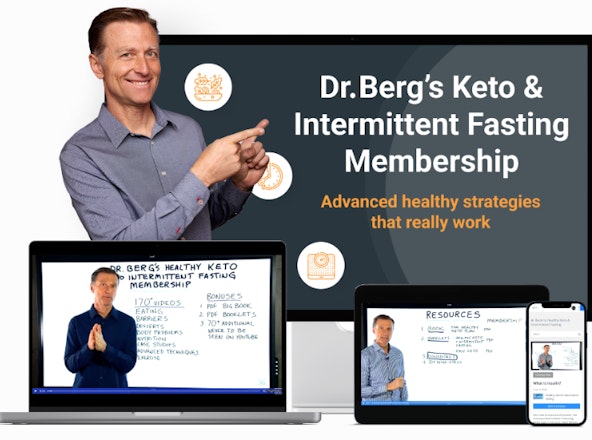
Subscribe to my newsletter for unfiltered health content
Some of my biggest health topics have been silenced. Although it may be a sign I'm doing something right, it blocks the potential of millions from being educated on natural health alternatives I've spent years developing. Join my newsletter today for unbiased, uncensored natural health remedies that are easy to understand and implement for a better and healthier you. In addition, you'll also receive data about the benefits of not only my products but others as well, along with exclusive promotions and offers to take advantage of. JOIN NOW for FREE!
Explore keto diet and intermittent fasting
Latest FREE health resources
View allKeto calculators and tools
Browse health topics
View all0
Keto success stories
Get inspired by success stories or post your story to inspire others
Newest Articles
Updated Articles
Popular Posts
Latest keto recipes
View allAbout Dr. Berg
I’m the author of the #1 Amazon.com Best Seller The 7 Principles of Fat Burning, and The Healthy Keto Plan (Formerly The New Body Type Guide). I want to share some vital information about why you’ve been having a rough time losing your belly.
The most common error in weight loss is incorrect sequence. It’s not ‘lose weight to get healthy,’ it’s ‘get healthy to lose weight’! This is because losing unwanted fat depends on getting healthy.
I want to show you how to look and feel healthy and youthful as you lose weight and as you age. To do this we use a program called Healthy Keto® and Intermittent Fasting. My goal is to put you in control of your body and your future longevity!
I am a health educator specializing in weight loss through nutritional and natural methods such as the keto diet plan and intermittent fasting, supported by low-carb diet tips that make following the keto diet easy and adaptable to any lifestyle.
On Dr.Berg.com you’ll find all the health options you need to live healthier and start losing weight like never before. We offer education so you can understand keto and keto-approved foods, and enjoy my favorite keto diet recipes. We also have a shop where you can find our recommended supplements, nutritional products, and diet plans to help you get started. Let’s get you going toward the healthiest and best version of you!
Dr. Berg’s clients include senior officials in the U.S. Government, ambassadors, medical doctors, high-level executives of prominent corporations, scientists, engineers, professors, and many others from all walks of life. View more about Dr. Berg.















